Industry News, trenchless products
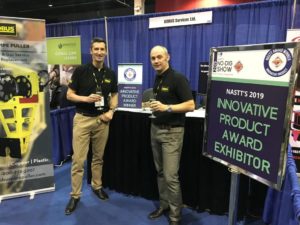 KOBUS SERVICES are delighted to announce that the business has won the Abbott Award for Innovative Products & Services for their KPP400 series Pipe Puller at the recent NASTT No-Dig Show in Chicago.
KOBUS SERVICES are delighted to announce that the business has won the Abbott Award for Innovative Products & Services for their KPP400 series Pipe Puller at the recent NASTT No-Dig Show in Chicago.
The award, bestowed by a specially selected judging panel, was given during the show in appreciation of the truly ground-breaking and innovative nature of the product.
The Kobus Pipe Puller KPP400 series has been recognized as the next generation in efficient and effective trenchless rehabilitation pipe repair and replacement technology.
The award recognizes the effort and investment that has been placed into the development of a system designed to help significantly impact the global problem of old service pipes falling into disrepair, leaking, reaching end of life or creating water quality issues.
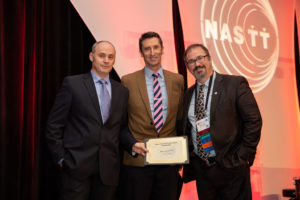 Kobus Pipe Puller enables the trenchless replacement of gas and water service pipes connecting mains to properties the world over. Now in use in UK, North America, and Australasia, the benefits of the system include less disruption before, during and after works, lower reinstatement costs, higher productivity and overall reduced cost.
Kobus Pipe Puller enables the trenchless replacement of gas and water service pipes connecting mains to properties the world over. Now in use in UK, North America, and Australasia, the benefits of the system include less disruption before, during and after works, lower reinstatement costs, higher productivity and overall reduced cost.
There are also compelling ecological and environmental benefits in completely removing the old pipes from the ground, something other techniques cannot guarantee, eliminating the potential environmental damage leaving it in situ may cause.
Tom Atienza and Simon Drain gratefully received the Award during the show and were mentioned during a presentation at the Gala Dinner.
“The Award was a big surprise as this was our first time visiting and exhibiting at the No Dig Show. NASTT have been enthusiastic supporters of Kobus Pipe Puller and we’ve been working hard to build a North America customer base, which obviously has huge potential and has been very welcoming” said Tom Atienza, operations director.
“We’re grateful to NASTT, sponsors and Benjamin Media for a well-organized No-Dig Show, and congratulations to the other entrants in the Innovative Products Award category”.
Visit kobuspipepuller.com to learn more how Kobus Pipe Puller 300 series (free standing) and 400 series (excavator mounted) can significantly enhance your pipe removal operation.
Industry News, trenchless people
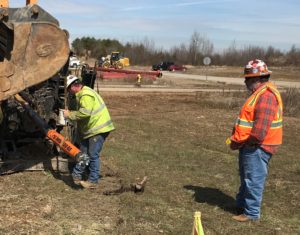 THOMPSON, CONNECTICUT USA: Numa, the world’s leading drilling technology provider, has announced the addition of Gregg Hayes as Product Manager HDD. Gregg is based in New York and will head up business development, service, and support of Numa’s horizontal directional drilling (HDD) products. The position will require him to grow direct and dealer sales of Numa’s horizontal hammers, bits, and drilling systems.
THOMPSON, CONNECTICUT USA: Numa, the world’s leading drilling technology provider, has announced the addition of Gregg Hayes as Product Manager HDD. Gregg is based in New York and will head up business development, service, and support of Numa’s horizontal directional drilling (HDD) products. The position will require him to grow direct and dealer sales of Numa’s horizontal hammers, bits, and drilling systems.
Gregg is a recognized expert in HDD and comes to Numa with 20 years of experience in the drilling industry. For the past 5 years, he was a top HDD salesperson selling into multiple US markets while also focusing on the further development of horizontal rock drilling products. Previously, he served in various sales and management roles for companies selling tooling, drilling fluids, bits, reamers, rock tools, swivels, etc. His experience and background provide drillers with a wealth of knowledge and insight.
“Gregg is one of the foremost experts in HDD with a proven track history of teaching drillers the most effective ways to drill using pneumatic hammers and bits in horizontal drilling applications,” said Numa Vice President of Sales, Neal Kuszewski. “He is a great addition to our team and further demonstrates Numa commitment to providing the best drilling resources in the industry.”
Gregg commented, “Throughout my career, I have recognized Numa to be the industry leader in rock drilling products. I am very excited to join Numa and continue their long history of providing customers with the right products, expertise, and support.”
ABOUT NUMA
Numa is the world’s leading drilling technology provider, dedicated to ongoing product innovation and results-oriented consistency. We’ve built a strong legacy of high quality, U.S. made hammers and bits for drilling holes 3½ – 50½ inches (89 -1283 mm) in diameter. With over 100 hammer and bit products serving 11 different industries, our products are capable of drilling vertical, horizontal, and reverse circulation holes in hard rock and unconsolidated formations.
Industry News, trenchless projects
Galerie des Janots Main Beam completes Arduous French Drive
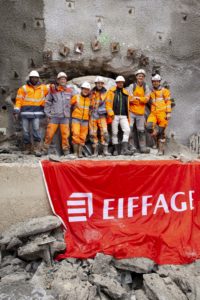 In April 2019, a Robbins 3.5 m (11.5 ft) diameter Main Beam TBM broke through into open space, completing its 2.8 km (1.7 mi) long tunnel. It was not the first time the machine had encountered open space: twice during tunneling, the machine hit uncharted caverns, the largest of which measured a staggering 8,000 cubic meters (283,000 cubic ft) in size.
In April 2019, a Robbins 3.5 m (11.5 ft) diameter Main Beam TBM broke through into open space, completing its 2.8 km (1.7 mi) long tunnel. It was not the first time the machine had encountered open space: twice during tunneling, the machine hit uncharted caverns, the largest of which measured a staggering 8,000 cubic meters (283,000 cubic ft) in size.
The obstacles overcome at the recent breakthrough are a significant achievement, said Marc Dhiersat, Project Director of the Galerie des Janots tunnel for contractor Eiffage Civil Construction. “We are proud to have led a motivated and conscientious team to the end of the tunnel who worked well without accidents despite the many technical difficulties encountered.”
The water tunnel, located below the community of Cassis, France, is an area of limestone known for its groundwater, karstic cavities, and voids. The limestone, combined with powdery clays, made for difficult excavation after the machine’s March 2017 launch. At the 1,035 m (3,395 ft) mark, the crew hit a cavern on the TBM’s left side. The cavern, studded with stalactites and stalagmites, was grazed by the TBM shield. The crew had to erect a 4 m (13 ft) high wall of concrete so the TBM would have something to grip against. The TBM was then started up and was able to successfully navigate out of the cavern in eight strokes without significant downtime to the operation—the process took about two weeks. Despite the challenges, Dhiersat thought positively of the TBM throughout the ordeal: “This has been the best machine for the job due to all the geological difficulties.”
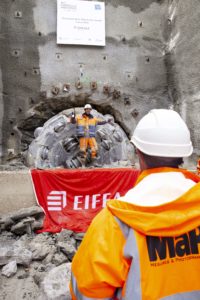 The first cavern, while the largest, was not the most difficult void encountered. The machine was averaging 20 to 22 m (65 to 72 ft) advance per day in two shifts after clearing the first cavity, with a dedicated night shift for maintenance. While excavating, a combination of probe drilling and geotechnical BEAM investigation—a type of electricity-induced polarization to detect anomalies ahead of the TBM—were used. Crews ran the excavation five days per week, achieving over 400 m (1,310 ft) in one month. This performance continued until the 2,157 m (7,077 ft) mark, when the machine grazed the top of an unknown cavity that extended deep below the tunnel path. The structure measured 22 m (72 ft) long, 15 m (49 ft) wide, and 14 m (46 ft) deep, or about 4,500 cubic meters (159,000 cubic ft) of open space.
The first cavern, while the largest, was not the most difficult void encountered. The machine was averaging 20 to 22 m (65 to 72 ft) advance per day in two shifts after clearing the first cavity, with a dedicated night shift for maintenance. While excavating, a combination of probe drilling and geotechnical BEAM investigation—a type of electricity-induced polarization to detect anomalies ahead of the TBM—were used. Crews ran the excavation five days per week, achieving over 400 m (1,310 ft) in one month. This performance continued until the 2,157 m (7,077 ft) mark, when the machine grazed the top of an unknown cavity that extended deep below the tunnel path. The structure measured 22 m (72 ft) long, 15 m (49 ft) wide, and 14 m (46 ft) deep, or about 4,500 cubic meters (159,000 cubic ft) of open space.
Crews probed in front of the cutterhead and began work to stabilize and secure the cavity with foam and concrete, as well as excavate a bypass gallery. “After filling much of the cavity (1,500 m3/53,000 ft3), our biggest difficulty was to ensure the gripping of the machine: We needed six bypass galleries and four months of work to reach the end of this challenge,” said Dhiersat. For the last 600 m (2,000 ft) of tunneling, “we were finally in good rock,” he emphasized. Overall rates for the project averaged 18 m (59 ft) per day in two shifts, and topped out at 25 m (82 ft) in one day.
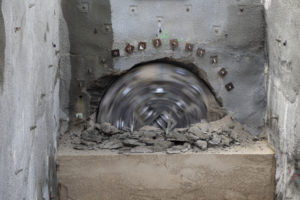 “The cooperation with Marc and his team on site was very good and we always enjoyed their professionalism and commitment to the project and the task. This, without any doubt was key for the success we achieved,” said Detlef Jordan, Business Manager Robbins Europe. “For us, it was satisfying and motivating to see that, by working together and joining the efforts of all partners on the project, the best and most successful outcome can be achieved. This commitment for decades has been at the heart of success in the tunneling industry, but it has not always been observed on other recent projects.”
“The cooperation with Marc and his team on site was very good and we always enjoyed their professionalism and commitment to the project and the task. This, without any doubt was key for the success we achieved,” said Detlef Jordan, Business Manager Robbins Europe. “For us, it was satisfying and motivating to see that, by working together and joining the efforts of all partners on the project, the best and most successful outcome can be achieved. This commitment for decades has been at the heart of success in the tunneling industry, but it has not always been observed on other recent projects.”
 Galerie des Janots is one of fourteen operations designed to save water and protect resources, which are being carried out by the Aix-Marseille-Provence metropolis, the water agency Rhône Mediterranean Corsica, and the State Government. The Janots gallery, once online, will replace existing pipelines currently located in a railway tunnel—these original pipes have significant deficiencies with estimated water losses of 500,000 cubic meters (132 million gallons) per year. The new tunnel will increase capacity to 440 liters (116 gallons) per second.
Galerie des Janots is one of fourteen operations designed to save water and protect resources, which are being carried out by the Aix-Marseille-Provence metropolis, the water agency Rhône Mediterranean Corsica, and the State Government. The Janots gallery, once online, will replace existing pipelines currently located in a railway tunnel—these original pipes have significant deficiencies with estimated water losses of 500,000 cubic meters (132 million gallons) per year. The new tunnel will increase capacity to 440 liters (116 gallons) per second.
Image 1: Contractor Eiffage Civil Construction celebrates the April 2019 breakthrough of a 3.5 m (11.5 ft) diameter Robbins Main Beam TBM in Cassis, France.
Image 2: Despite challenges including karstic limestone and clay, the Robbins TBM at Galerie des Janots achieved rates of 18 m (59 ft) per day on average, and topped out at 25 m (82 ft) in one day.
Image 3: The Robbins machine overcame tough conditions including two uncharted caverns, the largest of which measured a staggering 8,000 cubic meters (283,000 cubic ft) in size.
Image 4: The first cavern, encountered at the 1,035 m (3,395 ft) mark, was grazed by the TBM shield on one side and was studded with stalactites and stalagmites.
Industry News, trenchless products
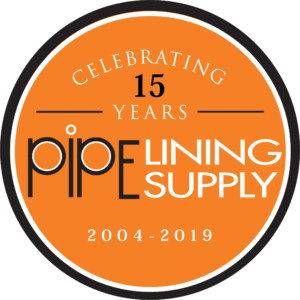 May 1, 2019: Pipe Lining Supply announces its 15th anniversary as a nationwide, full‐service,
May 1, 2019: Pipe Lining Supply announces its 15th anniversary as a nationwide, full‐service,
Pipe Rehabilitation Distributor.
Pipe Lining Supply (PLS) was founded on January 1, 2004 by Linda Heisler. Her primary focus was the CIPP industry in the California area. She saw a need to service customers with reasonably priced materials and great customer service. Two years later her husband John Heisler joined the company bringing a wealth of expansive knowledge of the industry including CIPP Lateral Lining, Pipe Bursting, HDD, Pipe Coating, Sewage Lining, Open Cut and Cover,
Water and Sewer Utility work.
Since 2004 Pipe Lining Supply, has evolved to a reputable company that manufactures and
distributes CIPP lateral lining equipment such as the Quik‐Shot™ System (launched in 2009),
resin and lining materials. In 2017, PLS introduced its AIPPR Quik‐Coating System designed for
drain, waste and vent (DWV) piping extending pipe life by 50+ years. PLS offers a full line of
equipment, materials and expert training to plumbers and drain cleaners so they have a “one
stop shop” in the pipe rehabilitation industry.
The company has also expanded its market, their team includes technical experts across the
USA, but also have a presence nationwide. “Pipe Lining Supply has experienced exceptional
growth and development over the past years” said Heisler. “Moving forward, our focus will
remain the same as day one, offering great equipment and materials with top notch training
and superior customer support.”
Over the past 15 years, Pipe Lining Supply has been evolving into a successful business that is a
leader in the industry with an enthusiasm to keep it growing and changing in the most
competitive way possible.
For more information on Pipe Lining Supply and their products please visit
http://www.pipeliningsupply.com
Contact info: Michelle Strasburg
Director of Marketing
info@pipeliningsupply.com
Phone: +1‐888‐354‐6464
Industry News, trenchless people
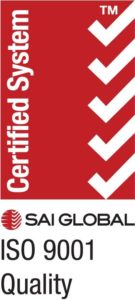 Brownsdale, MN – April 11, 2019 – Akkerman Inc., a premier trenchless underground construction systems manufacturer, attained the International Organization for Standardization (ISO) ISO 9001:2015 for its quality management system at its sole manufacturing facility in Brownsdale, MN.
Brownsdale, MN – April 11, 2019 – Akkerman Inc., a premier trenchless underground construction systems manufacturer, attained the International Organization for Standardization (ISO) ISO 9001:2015 for its quality management system at its sole manufacturing facility in Brownsdale, MN.
Following an independent audit conducted by SAI Global, the certificate was issued on January 18, 2019.
The scope of the certification applies to the design, manufacture, sales, and services of on line and on grade tunneling and pipe jacking products for the underground sewer, water, gas, and electrical utilities industries.
Akkerman embarked on the implementation of its quality management system in 2015 with consulting assistance from Enterprise Minnesota who was integral to the system’s execution.
Justin Akkerman, Akkerman operations manager, remarks, “Minnesota Occupational Safety and Health recognized us through the Minnesota Safety and Health Achievement Recognition Program for our safety program in 2010. Having our management system certified to ISO 9001:2015 was a natural progression to strengthen the business.”
Akkerman furthers, “Not only does our comprehensive quality management system benefit our employees through procedure efficiencies and repeat-ability, but our customers can also feel confident in knowing that the equipment that we manufacture is subject to the highest standards and continuous improvement at every step in the manufacturing process. Our ISO 9001:2015 Quality Management System ensures that from design conception to final product testing, our equipment is produced with quality and value at the forefront.”
Established in 1973, Akkerman develops, manufactures and supports advanced guided boring, microtunneling, pipe jacking, sliplining and tunneling underground construction solutions that accurately install a variety of pipe in an extensive range of ground conditions and project challenges. Akkerman systems are available for purchase, lease-to-purchase, or rent from our rental fleet. Contact us to partner with you on your next project at 800.533.0386 and visit akkerman.com.
Industry News, trenchless products
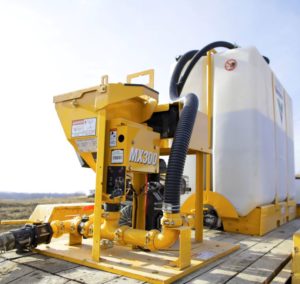
PELLA, Iowa, April 11, 2019 – The right-sized mixing system is key for drilling operations. With a redesigned, slim rectangular profile tank, the new Vermeer MX300 mixing system helps horizontal directional drilling (HDD) contractors optimize productivity and offers customizable mounting configuration options. Equipped with a 23 hp (17.2 kW) Kohler ECH 7300 EFI gas engine that outputs 350 gpm (1,324.9 Lpm) of flow, the MX300 mixing system power unit can be paired with up to two tanks at once to help decrease time spent mixing and refilling drilling fluid tanks. The unit’s narrow rectangular tank design also helps maximize fluid volume, and a small footprint can help with convenient transporting and storage.
“The Vermeer MX300 mixing system is an upgrade to the MX240 model,” explained Tod Michael, product manager of trenchless products at Vermeer. “With the ability to use one pump with one or two tanks, the MX300 is scalable to a contractor’s jobsite needs from small bores to large-diameter and longer-distance HDD applications in varying soil types.”
The new Vermeer mixing system can be paired with a 750 gallon (2,839.1 L) or 1,000 gallon (3,785.4 L) tank and works with a variety of horizontal directional drills. It features a wide-mouth hopper and suction hose for the convenient pouring of drilling additives. The tapered bottom of the rectangular tank design helps prevent additives from settling, building up and assists with efficient drainage. At a width of just 40 inches (101.6 centimeters), the MX300 can be mounted to transport two tanks inside a standard-sized enclosed truck.
The MX300 comes with a 16 gallon (60.6 L) fuel tank and is convenient to service with access to the roll jets through the top of the tank and two drainage points that are operated by two accessible valves.
For more information about the Vermeer MX300 mixing system, visit Vermeer.com or contact your local Vermeer dealer.
About Vermeer Corporation
Vermeer delivers a real impact in a progressing world through the manufacture of high-quality underground construction, surface mining, tree care, agriculture and environmental equipment. With a reputation for durability and reliability, that equipment is backed by localized customer service and support provided by independent dealers around the world. To learn more about Vermeer, products, the dealer network and financing options, visit Vermeer.com.
Vermeer Corporation reserves the right to make changes in engineering, design specifications; add improvements; or discontinue manufacturing at any time without notice or obligation. Equipment shown is for illustrative purposes only and may display optional accessories or components specific to their global region.
Please contact your local Vermeer dealer for more information on machine specifications.
 KOBUS SERVICES are delighted to announce that the business has won the Abbott Award for Innovative Products & Services for their KPP400 series Pipe Puller at the recent NASTT No-Dig Show in Chicago.
KOBUS SERVICES are delighted to announce that the business has won the Abbott Award for Innovative Products & Services for their KPP400 series Pipe Puller at the recent NASTT No-Dig Show in Chicago. Kobus Pipe Puller enables the trenchless replacement of gas and water service pipes connecting mains to properties the world over. Now in use in UK, North America, and Australasia, the benefits of the system include less disruption before, during and after works, lower reinstatement costs, higher productivity and overall reduced cost.
Kobus Pipe Puller enables the trenchless replacement of gas and water service pipes connecting mains to properties the world over. Now in use in UK, North America, and Australasia, the benefits of the system include less disruption before, during and after works, lower reinstatement costs, higher productivity and overall reduced cost.







